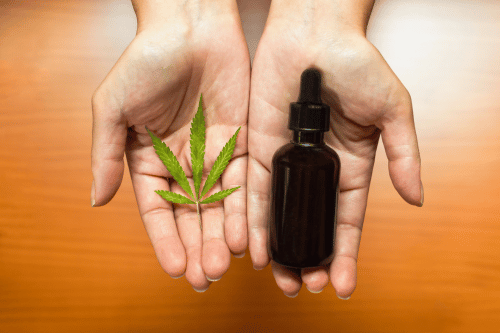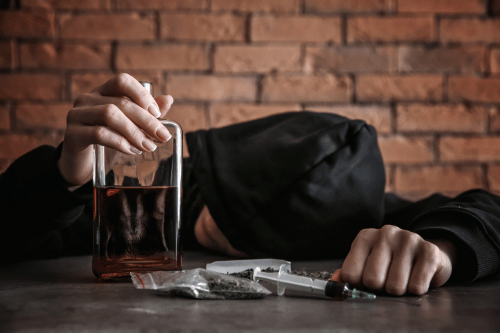Cross Faded Meaning: Understanding the Dangers and Risks
In the world of substance use, the term “cross faded” has gained significant attention, especially among young adults and recreational users. But what does “cross faded” really mean? And more importantly, what are the potential risks associated with this phenomenon? In this article, we dive deep into the meaning of being cross faded, the substances involved, and the mental and physical health implications of cross fading.
By understanding these details, you can make more informed choices, avoid dangerous situations, and protect your mental and physical health.

What Does “Cross Faded” Mean?
In slang, “cross faded” refers to the state of being intoxicated from both alcohol and marijuana simultaneously. When someone drinks alcohol and smokes marijuana at the same time, they experience a cross faded high. This condition results from the combination of two substances with opposing effects on the central nervous system: alcohol, a depressant, and marijuana, which can act as both a stimulant and a depressant. The combination of these opposing effects can lead to unpredictable and often dangerous results.
Understanding the cross faded meaning goes beyond the slang definition. The interaction of alcohol and marijuana in the body is complex. Alcohol enhances the absorption of THC (the active ingredient in marijuana) into the bloodstream, leading to a more intense and prolonged high. On the other hand, marijuana can reduce nausea, making it easier to consume more alcohol, which can lead to excessive drinking. This cycle of reinforcement can easily lead to alcohol poisoning or a severe overdose of THC, which can manifest in panic attacks, confusion, and other extreme reactions.

The Rise of Cross Fading Among Young Adults
Cross fading has become particularly popular among young adults, especially in social settings like college parties, concerts, and festivals. Marijuana users, particularly among young adults, are increasingly engaging in cross fading at social events. The combination of marijuana and alcohol is often seen as a way to enhance the experience of these events. However, this trend is not without significant risks. Peer pressure, curiosity, and the desire for an intensified high are among the reasons people mix alcohol and marijuana. For many young adults, cross fading is seen as a rite of passage or a way to fit in with their peers.
Unfortunately, the popularity of cross fading has led to a growing number of emergencies related to substance abuse. Hospitals and emergency rooms have reported an increase in cases involving alcohol poisoning and severe reactions to marijuana, particularly among young adults. Many of these incidents occur because users underestimate the effects of combining these substances, leading to dangerous outcomes.
The allure of cross fading is often tied to the perception that marijuana is “safer” than other drugs, which can lead people to underestimate the risks of mixing it with alcohol. However, the combination of these substances creates a unique set of challenges for the body, which is not equipped to handle the conflicting signals sent to the brain by alcohol and marijuana.
How Alcohol and Marijuana Interact
Alcohol and marijuana both impact the central nervous system, but in different ways, especially when drinking alcohol is combined with smoking marijuana. Alcohol is a depressant that slows down brain function, impairs motor skills, and lowers inhibitions. When consumed in large amounts, alcohol can lead to alcohol intoxication, which is characterized by symptoms like slurred speech, impaired judgment, and loss of coordination. On the other hand, marijuana can either stimulate or sedate the brain depending on the strain and the individual’s tolerance. Some strains of marijuana are known for their energizing effects, while others are more sedative, leading to relaxation and drowsiness.
When combined, these substances produce overlapping drug effects that can amplify the high and lead to unpredictable outcomes. The effects of being cross faded are not merely the sum of being drunk and high; they can create entirely new sensations and reactions. For example, alcohol can enhance the psychoactive effects of THC, leading to stronger feelings of euphoria or, conversely, extreme paranoia and anxiety. The unpredictability of these effects makes cross fading particularly risky.
Cross Faded Symptoms
Some common symptoms of being cross faded include:
Extreme Dizziness: The conflicting effects of alcohol and marijuana can cause severe dizziness, making it difficult to stand, walk, or even sit upright.
Impaired Motor Skills: Both alcohol and marijuana impair motor skills, and when combined, they can make even simple tasks like walking a straight line impossible.
Nausea and Vomiting: Although marijuana is often used to combat nausea, in a cross faded state, the combination of alcohol and marijuana can actually lead to severe nausea and vomiting, especially if too much alcohol is consumed.
Panic Attacks: The enhanced effects of THC due to alcohol can trigger panic attacks, paranoia, and a sense of impending doom.
Confusion and Paranoia: The combination of these substances can lead to intense confusion, disorientation, and paranoid thoughts, making the experience far from enjoyable.
These symptoms are often more intense than those experienced when using either substance alone. The risk of severe reactions is heightened in individuals who are inexperienced with either alcohol or marijuana or who do not know their own limits.

The Risks of Cross Fading
Cross fading is not just about having a good time—it comes with serious risks. Cross fading can exacerbate issues related to alcohol abuse, making it harder for individuals to function normally and increasing the need for professional treatment. Combining substances like alcohol and marijuana can lead to adverse effects that range from mildly uncomfortable to life-threatening. Some of the most significant risks include:
1. Alcohol Poisoning and Respiratory Depression
One of the most dangerous risks associated with cross fading is alcohol poisoning. Consuming too much alcohol can lead to alcohol poisoning, a condition that occurs when there is so much alcohol in the bloodstream that it begins to shut down critical functions like breathing, heart rate, and body temperature regulation. When marijuana is added to the mix, it can worsen respiratory depression. This occurs because both substances can suppress breathing, particularly in those with underlying health conditions. The combination can be fatal if not treated immediately.
2. Impaired Cognitive Function and Motor Skills
The combination of alcohol and marijuana severely impairs cognitive abilities and motor skills. This increases the likelihood of accidents, such as car crashes, falls, and other incidents that could lead to injury. Impaired cognitive function also leads to poor decision-making, which can result in engaging in risky behaviors like unprotected sex, driving under the influence, or taking more substances.
3. Increased Risk of Substance Abuse and Addiction
Repeated cross fading can lead to substance abuse and, over time, substance use disorder. The body may begin to crave the heightened sensation of being cross faded, leading to frequent use of both substances. Over time, this can lead to dependence, where the individual feels unable to function without being intoxicated by both alcohol and marijuana. This cycle can be difficult to break and often requires professional treatment.

Why Do People Cross Fade?
There are several reasons why people choose to mix alcohol and marijuana, despite the risks:
Peer Pressure: Among young adults, there is a social expectation to engage in such behavior. In many social settings, cross fading is seen as the norm, and those who do not participate may feel left out or judged.
Curiosity: Many individuals are curious about how combining substances feels. They may want to experiment with different highs and see how their bodies react to mixing alcohol and marijuana.
Increased High: Mixing alcohol and marijuana can enhance the effects of both, leading to a more intense high. For those seeking a stronger experience, cross fading may seem appealing.
However, it’s important to recognize that the short-term pleasure of cross fading can come with long-term consequences. The desire for a more intense high can quickly turn into a dangerous situation, leading to health complications, addiction, or even legal issues if substances are used irresponsibly.
Cross Fading: Is It Worth the Risk?
Given the potential health risks, cross fading is generally not advisable. The combination of alcohol and marijuana is unpredictable, and what might seem like a harmless experience can quickly turn dangerous. For many people, the risk of severe side effects, including panic attacks, respiratory depression, and impaired judgment, outweighs the potential benefits.
The effects of cross fading can vary widely depending on factors like the amount of alcohol and marijuana consumed, the user’s tolerance, and the setting in which the substances are used. For those who are unfamiliar with either substance, the risk of a negative reaction is even higher. It’s essential to weigh the potential risks against the desire for an enhanced high.
Understanding the Science Behind Cross Fading
Cross fading affects the brain’s cannabinoid receptors differently than using either alcohol or marijuana alone. Research has shown that consuming too much THC can lead to severe symptoms like panic, vomiting, and disorientation, especially when combined with alcohol. Research has shown that ethanol increases plasma delta-9-THC levels, leading to more intense intoxication. Additionally, mixing these substances can lead to significantly elevated THC levels in the bloodstream, increasing the risk of negative side effects like panic attacks, extreme paranoia, and cognitive impairment.
The interaction between alcohol and marijuana is complex, and scientists are still studying the full extent of the effects. However, what is clear is that the combination places significant strain on the body’s ability to regulate itself. The more often someone engages in cross fading, the greater the likelihood of long-term damage to both physical and mental health.

How to Avoid Cross Fading and Stay Safe
If you or someone you know is considering cross fading, it’s crucial to understand the risks. Here are some steps to avoid cross fading:
Set Clear Boundaries: Know your limits when it comes to alcohol and marijuana use. Stick to one substance at a time to avoid the complications associated with cross fading.
Avoid Peer Pressure: Surround yourself with people who respect your choices and do not pressure you into risky behaviors. Having a strong support system can make it easier to say no.
Stay Educated: Be aware of the potential dangers of mixing substances and make informed decisions. Understanding the science behind cross fading can help you recognize why it’s not worth the risk.
The Role of Healthcare Professionals in Treating Cross Fading
If you or a loved one struggles with substance use or regularly engages in cross fading, seeking help from healthcare professionals is essential. At Adolescent Mental Health, we offer personalized treatment plans for individuals dealing with substance abuse and addiction. Our programs include support groups, medical marijuana education, and strategies to help individuals manage their substance use disorder.
The path to recovery often starts with recognizing the problem and reaching out for help. Treatment plans can include therapy, counseling, and medical interventions to help individuals regain control of their lives and break free from the cycle of cross fading and addiction.
Cross Fading and Mental Health
The link between cross fading and mental health cannot be overlooked. Prolonged use of both alcohol and marijuana can lead to mental health disorders, such as depression, anxiety, and even psychosis. It’s important to understand that substance use can exacerbate existing mental health conditions, creating a vicious cycle where individuals use more substances to cope with their symptoms, only to make them worse in the long run.
At Adolescent Mental Health, we recognize the connection between substance abuse and mental health. Our holistic approach to treatment addresses both issues simultaneously, offering a comprehensive solution for those struggling with cross fading and its effects on their mental well-being.

The Importance of Understanding Substance Use
Cross fading is a dangerous practice that involves consuming multiple substances at once. While it might seem like a fun or exciting experience at first, the physical and mental health risks far outweigh any temporary pleasure. The unpredictable nature of combining alcohol and marijuana means that users are taking a gamble every time they engage in this behavior.
Understanding the cross faded meaning is about more than just defining a term—it’s about recognizing the broader implications for health, safety, and well-being. Whether you’re a young adult experimenting or someone struggling with substance abuse, it’s crucial to recognize the dangers of mixing alcohol and marijuana. Educating yourself and others can help prevent the negative consequences that often accompany cross fading.
Conclusion: Cross Faded Meaning and Its Implications
Being cross faded might be a trending term, but it comes with significant risks. Whether you’re a casual user or someone who frequently cross fades, it’s important to understand the potential consequences. Mixing alcohol and marijuana is not a safe practice, and the short-term high is not worth the long-term damage to your health and well-being.
At Adolescent Mental Health, we are here to help those dealing with the repercussions of substance abuse and mental health challenges. If you or someone you know needs support, reach out to our expert team today for guidance and treatment. Recovery is possible, and with the right support, you can overcome the dangers of cross fading and lead a healthier, more fulfilling life.








